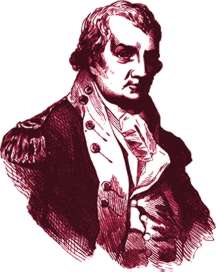1795- Pinckney's Treaty

The United States signed the Convention of Paris with France. Under this treaty, France accepted US neutrality rights at sea. The French also discharged the US from its obligations established under the alliance formed by the two nations during the American Revolution. In return, the United States granted France "most favored trading status."
The diminishing strength of the Spanish Empire played a critical role in its consent to the Treaty of San Lorenzo in 1795. This treaty, more commonly known as "Pinckney's Treaty," was named after Thomas Pinckney, the American Ambassador who was instrumental in its negotiation. On the Spanish side, the negotiations were led by Don Manuel de Godoy, a prominent political figure. Spain's agreement to the treaty was largely influenced by its concerns over a potential alliance between Great Britain and the United States, which would have threatened Spanish interests in North America.
Under the terms of the treaty, Spain acknowledged the 31st parallel as the southern boundary of the United States, a significant concession that clarified and secured the border. To ensure accuracy and mutual satisfaction, the United States and Spain agreed to conduct a joint survey of the border. This demarcation not only provided clear territorial limits but also played a crucial role in the U.S. territorial expansion.
A pivotal aspect of the treaty was the cession of territory by Spain, which would later be organized as the Mississippi Territory. This region, previously under Spanish control, became an integral part of the United States, significantly increasing its land area and influence in the region.
Furthermore, the treaty granted the United States significant navigational rights on the Mississippi River, a major North American waterway. This included the right to use the port of New Orleans, a strategic location for trade and transportation. The access to the Mississippi River and the port of New Orleans was a major economic boon for the United States. It allowed American products to be shipped down the river, facilitating trade and commerce with both the East Coast of the United States and European markets. This provision of the treaty played a crucial role in the economic development of the western territories of the United States, making it easier to transport agricultural products and other goods to wider markets.
In summary, the Treaty of San Lorenzo or Pinckney's Treaty marked a significant diplomatic success for the United States. It not only expanded the country's territory but also secured vital trade routes and established a more stable and defined boundary with the Spanish Empire. The treaty reflected the changing dynamics of power in North America and the growing influence of the United States in the region.
 >
>